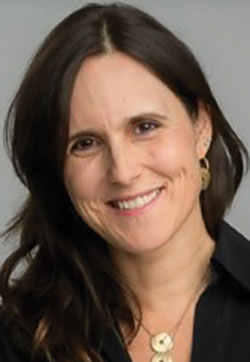Itamar on the HST boom ‘People are waiting for services to be digitally delivered to them at home’

By Liz Beaulieu, Editor
Updated 12:14 PM CDT, Thu April 8, 2021
The percentage of sleep tests conducted in homes vs. in labs has flip flopped from 30%/70% before the pandemic to 70%/30% during the pandemic, says Mendes-Roter, vice president of digital health marketing for Itamar, which makes the WatchPAT ONE home sleep test.
“We believe it will stabilize at 50%/50%,” she said. “People are waiting for services to be digitally delivered to them at home.”
Hear what Mendes-Roter had to say about a recent consumer survey that Itamar commissioned and how the results will help position the company for the boom in home sleep testing.
HME News: One of the findings from the survey that I found interesting was: Of the 33% of respondents who indicated having used a wearable device or an app to track and/or monitor their sleep, just 41% indicated they took the results seriously. How does Itamar distinguish itself from wearable devices?
Joao Mendes-Roter: I’m fluent in wearables – and there’s a lot of noise out there. I think it’s important to set the difference between consumer-based wearables and clinical-grade wearables. I think wearables and wellness products are doing great work in getting consumers to take ownership of their health, but what if medical intervention is needed? This is where companies like Itamar come into play. Our products are prescribed and reimbursed.
HME: Another interesting finding from the survey: 51% of respondents indicated they would not take a sleep test or seek help for a sleep disorder. Their top three concerns: cost (27.5%), inconvenience (20%) and fear of infection given the pandemic (16%). How is that finding influencing how Itamar positions the WatchPAT ONE?
Mendes-Roter: That’s a data point that really helps us. Our main product is the WatchPAT ONE. It costs 10% of an in-lab sleep test; it’s comfortable and it’s easy to use through an app; and it’s disposable, so it’s safe. We are happy that the resistance that was reported is actually a non-issue for our product.
HME: The survey found 89% of respondents know what sleep apnea is, but they’re uninformed of the wider applications and significance of the disorder. How will that influence Itamar’s strategy?
Mendes-Roter: We’re very focused on solving the patient pathway for sleep therapy but also integrating that pathway into other disease journeys. We believe acquiring Spry Health and entering the remote patient monitoring market will allow us to do exactly this. This is a wearable that you wear on the wrist that was originally developed for COPD remote patient monitoring. What we want to do is apply Itamar’s algorithm to monitor sleep apnea from the wrist. The reason why this is so important: There are patients who use CPAP therapy for a total of four hours and not every day. What happens when they’re not on therapy? Physicians don’t have the visibility of the burden of the disease on the heart, for example.
 ATLANTA – Itamar Medical’s Joao Mendes-Roter believes there’s a “digital revolution” happening in the home right now that will increase the percentage of sleep tests being conducted there in the long term.
ATLANTA – Itamar Medical’s Joao Mendes-Roter believes there’s a “digital revolution” happening in the home right now that will increase the percentage of sleep tests being conducted there in the long term.
Comments